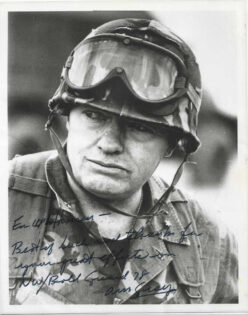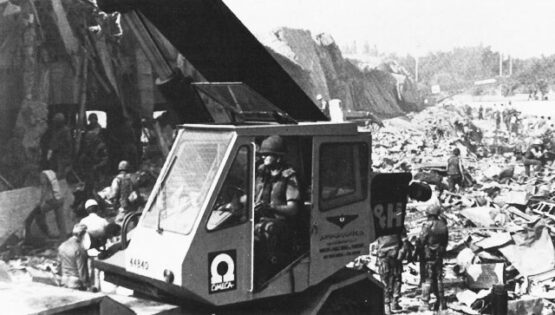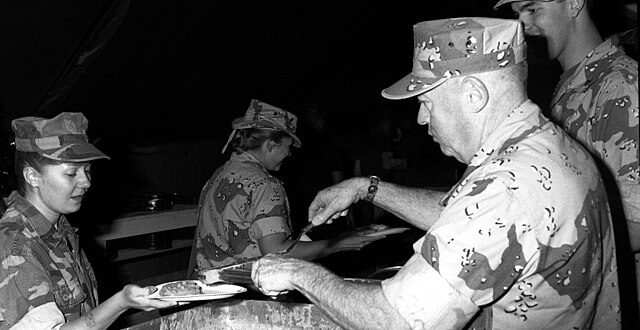by Heath Hansen
As a child, I enjoyed looking through the photo albums of my father’s old military pictures. There was one, in particular, that stood out because it was of a serviceman other than my father.
The black and white picture displayed a Marine Brigadier General clad in woodland pattern camouflage uniform, wearing an M-1 “steel pot” helmet donned with goggles. The Marine stoically gazed to his right, looking into the distance. The bottom of the photo was captioned with cursive writing and a signature.

My father told me he received that photo after completing a NATO exercise while assigned to the 4th Marine Amphibious Brigade. The Marine General featured in the photograph is Alfred M. Gray, who later became the 29th Commandant of the Marine Corps.
READ MORE from Heath Hansen about his father: ‘I Wanna Jump From a Big Iron Bird’: Following in Dad’s Boot-Steps to Become a Paratrooper
Gray started his career as an enlisted Marine, concentrating on reconnaissance positions up until reaching the rank of sergeant. Upon becoming a lieutenant, he was assigned to the infantry, and eventually commanded the very first Marine signals intelligence unit in Vietnam. In 1975, as a colonel, he would assist the evacuation efforts of the military and civilians at the US embassy in Saigon.
In 1978, as commanding general of the 2nd Marine Division (pictured above) his Marines participated in Northern Wedding / Bold Guard. During this exercise, NATO forces tested their ability to keep Western Europe in the fight, should the Cold War escalate with the Warsaw Pact countries. In all, approximately 40,000 personnel, nearly two dozen submarines, and hundreds of aircraft participated in the maneuvers. Gray continued to lead this exercise in future rotations.
In later years, Gray would describe the Marine Barracks bombing on October 23rd, 1983 in Beirut, as the single worst day of his career. The attack claimed the lives of 241 service members, including 220 Marines. As the 2nd Marine Division commander, in order to protect Marines against future enemy attacks, Gray insisted on upgrading the methods servicemen used to gather intelligence and distribute the information to pertinent units. His leadership in the aftermath of the attack led to future command positions in the military.

Marines in the aftermath of their barracks being bombed in Beirut, 1983
On July 1st, 1987 Alfred M. Gray was promoted to General and became Commandant of the Marine Corps. He remained in this position until June 30th, 1991, when he retired after 41 years of service.
General Alfred M. Gray died March 20th, 2024 at the age of 95.
The caption on the photograph reads:
For LCP Hansen,
Best of luck and thanks for your great efforts on NW / Bold Guard ‘78.
AM Gray
Heath Hansen writes frequently for Soldier of Fortune.
 Soldier of Fortune Magazine The Journal of Professional Adventurers
Soldier of Fortune Magazine The Journal of Professional Adventurers






